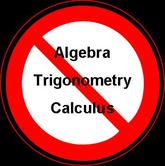
One could well ask why in the midst of a recession (“recovery†in some circles) the U.S. would try to attract more foreign, highly educated scientists and engineers to our shores. Yet we, who live in the Silicon Valley, know the answer: fewer and fewer American students are interested, or able, to enter demanding science and engineering programs. In 2006 the fraction of foreign undergraduate students in engineering reached 45%, in computer science 44%, and in physical sciences 40%. In 2007, the fraction of foreign students receiving doctorates in science and engineering was even larger: 62% in engineering overall, 73% in electrical engineering, and 57% in computer science. (NSF S&E Indicators, 2010)
Consequently, I was excited when the National Research Council recently published its new Framework for K-12 Science Education, in which it outlines its vision for improving teaching science in America in the 21st century. The framework has prestigious authors in science and science education and they promise us a
coherent and consistent approach throughout grades K-12 [that] is key to realizing the vision for science and engineering education embodied in the framework: [where] students, over multiple years of school, actively engage in science and engineering practices and apply crosscutting concepts to deepen their understanding of each fields’ disciplinary core ideas.[p. ES-2]
The National Academies, this framework’s publisher, stresses promoting American competitiveness as an important goal:
Science, engineering, and technology permeate nearly every facet of modern life and hold the key to meeting many of humanity's most pressing challenges, both present and future. To address the critical issues of U.S. competitiveness and to better prepare the workforce, Framework for K-12 Science Education proposes a new approach to K-12 science education that will capture students' interest and provide them with the necessary foundational knowledge in the field.
This certainly looks promising, particularly because the framework for the first time introduces engineering as a subject of study for our K-12 students. Yet as I kept reading the document’s 280 pages of lofty prose, I noticed something odd: The framework does not expect students to use any kind of analytical mathematics while studying science.
For example, the framework promotes a practice called Using Mathematics, Information and Computer Technology, and Computational Thinking (p. 3-13). Yet one observes that after singing paeans to the importance of mathematics, it only expects students by grade 12 to be competent in "recognizing," "expressing," and "using simple … mathematical expressions … to see if they make sense," but not in actually solving science problems using mathematics. Its other suggestions include the use of computer programs and simulations, ability to analyze data using computer tools and spreadsheets, modeling, and describing systems using charts and graphs. But there is nothing about actually being able to model a system by its equations, or solve it using mathematical techniques. The framework also includes as one of its Cross Cutting Concepts something it calls Systems and System Models (p. 4-7), but there, yet again, it does not expect students to use mathematics for that modeling. Its models "can range in complexity from lists and simple sketches to detailed computer simulations or functioning prototypes," but mathematics is left behind.

All of this made me think. Before Lavoisier’s quantitative approach there was no chemistry, only Alchemy. Before Newton’s invention of calculus, physics was more a craft than a science. Mathematics has been inseparable from science for the last 300 years, and has been largely responsible for the world we live in. Yet here we have a “21st century†science framework for our students that effectively ignores mathematics.
I went back and re-read the document to make sure I didn’t miss anything. And, indeed, I did not. Turns out it was staring at me right there on the first page:
The overarching goal of our framework for K-12 science education is to ensure that by the end of 12th grade, all students have some appreciation of the beauty and wonder of science; possess sufficient knowledge of science and engineering to engage in public discussions on related issues; are careful consumers of scientific and technological information related to their everyday lives; are able to continue to learn about science outside school; and have the skills to enter careers of their choice, including (but not limited to) careers in science, engineering, and technology. [p. ES-1, emphasis added]

Now I finally understood the wisdom of our government in easing the immigration of skilled professionals even in the midst of the largest unemployment in almost a century. When even our congressionally-chartered National Academies, and their most prestigious National Research Council, have lost their belief that American students can compete with their foreign peers, what else can a lowly government department do?
Or, perhaps, someone ought to shake those prestigious scientists and science educators and bring them to their senses?









 RSS Feed
RSS Feed